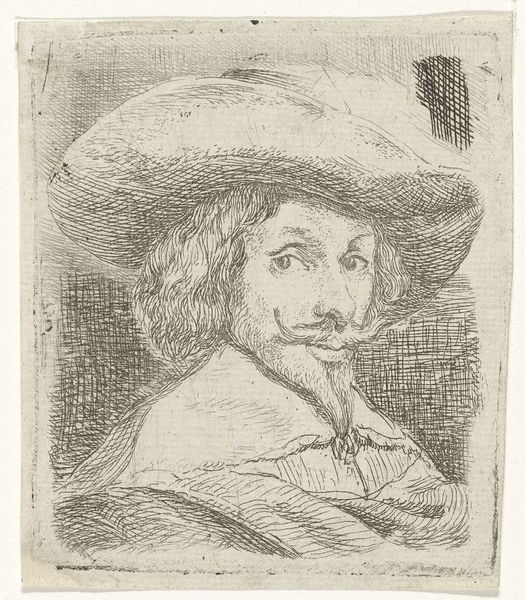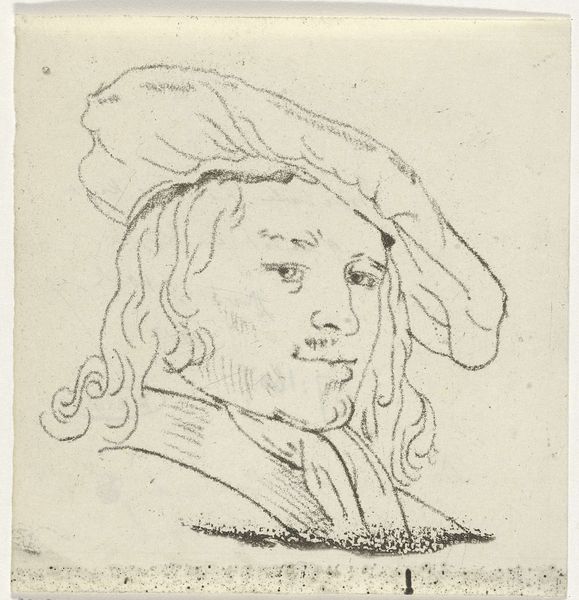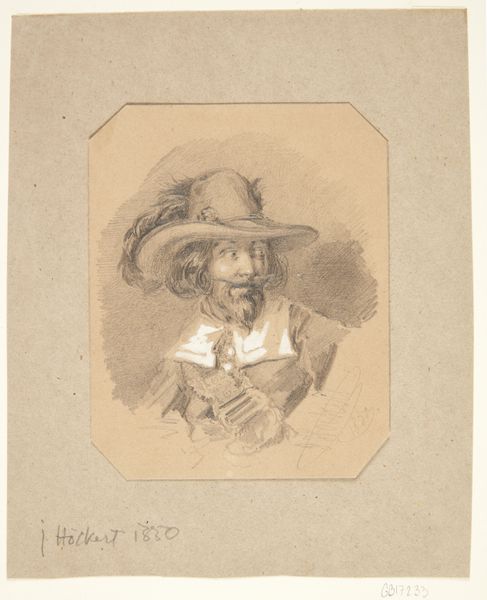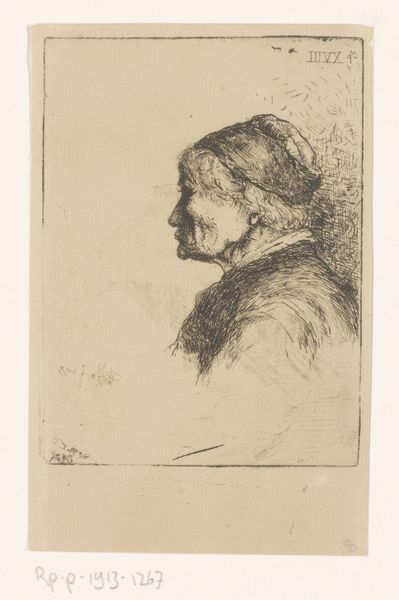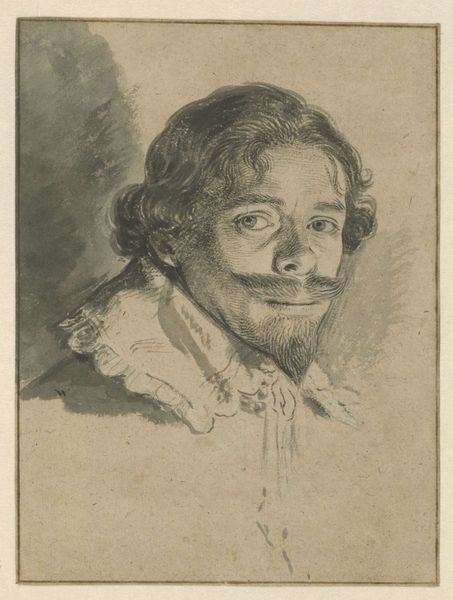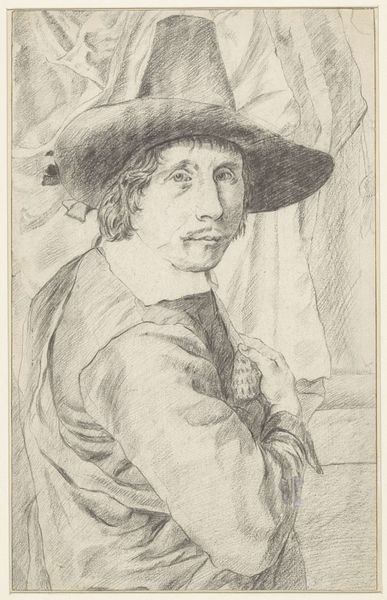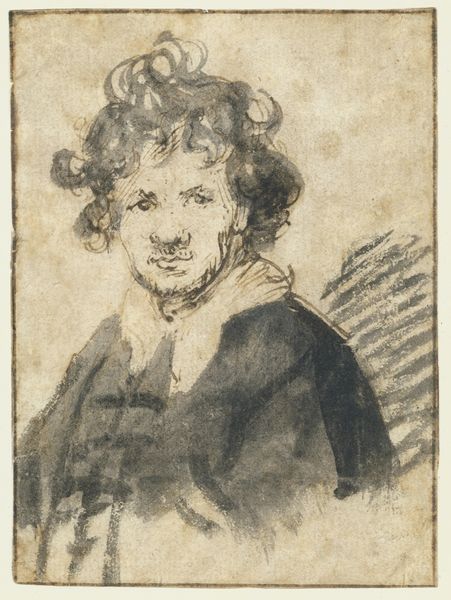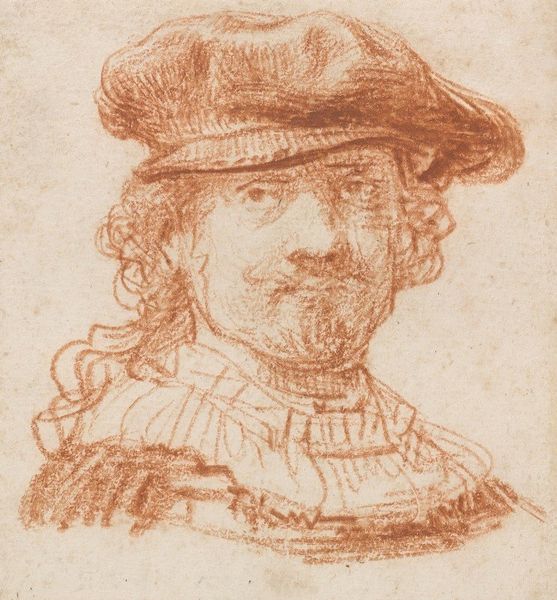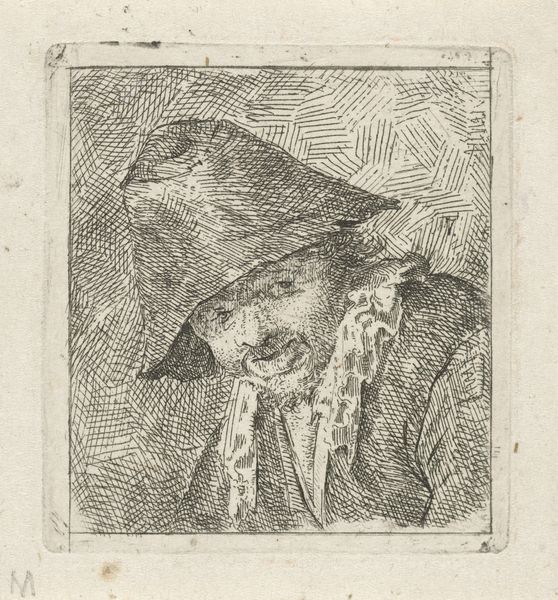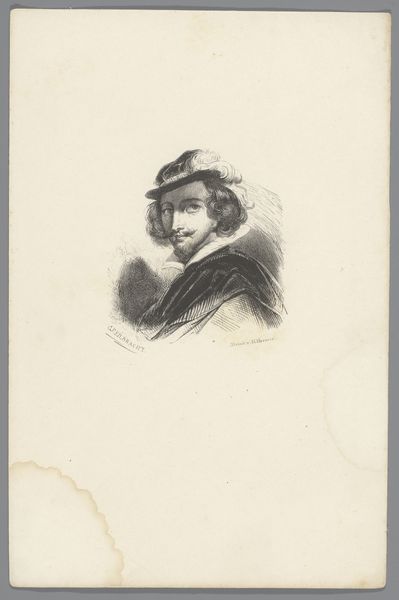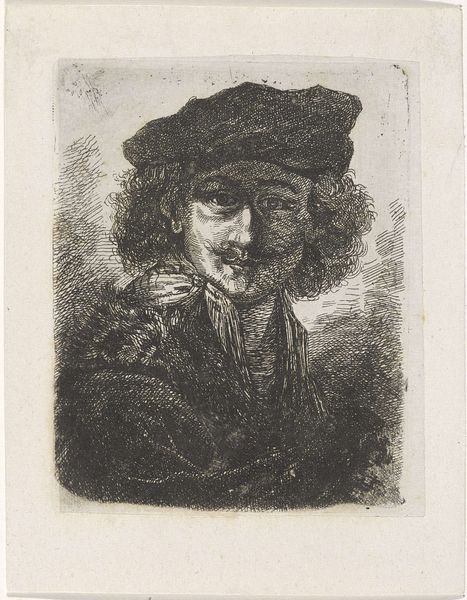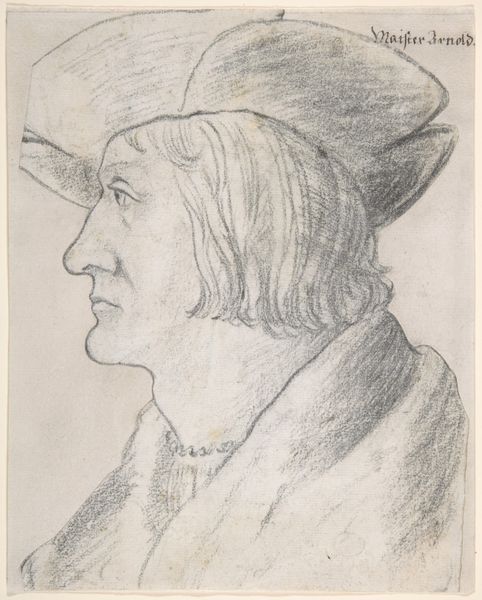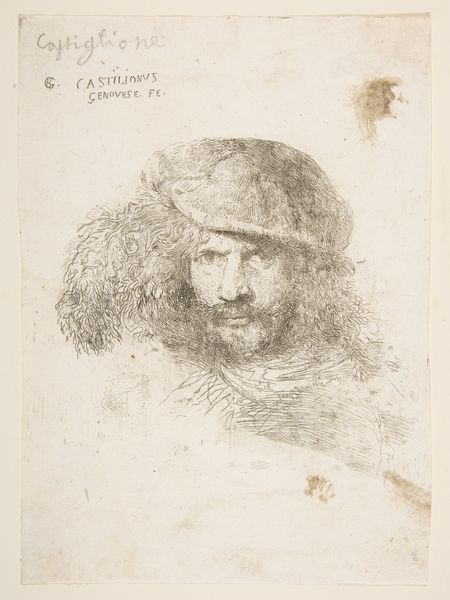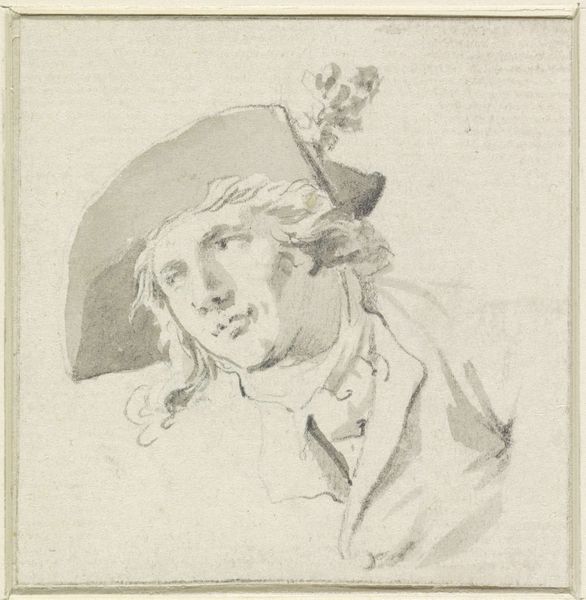
Portræt af en mand med hat, formentlig maleren Pieter van Laer 1624 - 1674
0:00
0:00
drawing, print, etching
#
portrait
#
drawing
#
baroque
# print
#
etching
#
etching
Dimensions: 83 mm (height) x 84 mm (width) (plademaal)
Curator: This etching is identified as "Portræt af en mand med hat, formentlig maleren Pieter van Laer," or, Portrait of a Man with a Hat, Presumably the Painter Pieter van Laer, attributed to Jan van Ossenbeeck. The piece dates sometime between 1624 and 1674. Editor: The figure seems to emerge from the page. The linework is so delicate yet creates a vivid, somewhat melancholic, presence. It feels incredibly intimate, like a fleeting glance. Curator: Indeed. The portrait as a form had been developing an increasing interiority at this point, and an etching like this could easily circulate amongst an artistic community. Editor: I’m immediately drawn to the hat, though. It is so large and floppy and seems to overshadow the face. Considering the sitter's potential identity, could the hat symbolize something about the artistic identity? Perhaps an aspiration to emulate a Bohemian lifestyle? Curator: The hat certainly sets the tone! By this time, the "bohemian" artist was very much a type, living outside the constraints of established society. Van Laer, if it is him, would have participated in the Bentvueghels, a society of mostly Dutch and Flemish artists known for their unconventional lifestyles in Rome. Editor: Ah, that context makes it even richer. The sketchiness of the line, then, reinforces the carefree and possibly somewhat unfinished nature of that artistic life, always a work in progress, never static. Do you think this etching was made as a form of self-promotion for Ossenbeeck? Curator: It could have functioned as a calling card or a study. Prints were relatively affordable and widely distributed, offering a crucial means of disseminating images and ideas at this time. So perhaps the artist advertised themselves. Editor: Considering its apparent simplicity, there's so much to unpack about the self-image of artists and the communities they cultivated during the Baroque period. Curator: Precisely. An image like this demonstrates how artistic identity became a performative act as much as an inherent attribute. Editor: Looking closely, it offers a potent distillation of an artist's self-awareness within a changing cultural landscape. Curator: It leaves me considering how we construct identity, especially in artistic spheres, even today.
Comments
No comments
Be the first to comment and join the conversation on the ultimate creative platform.
